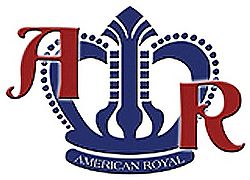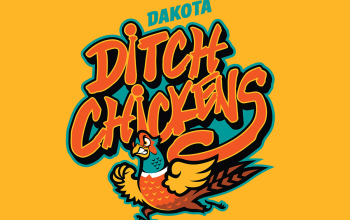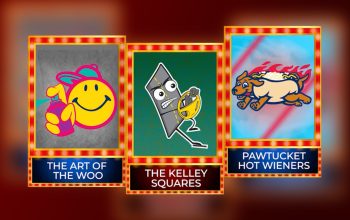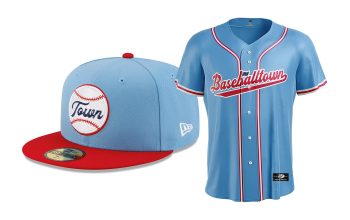In 1968, Shannon Manning was one of what he figures to be 500 to 600 artists working for Hallmark Cards, headquartered in Kansas City. The city had just been awarded a Major League Baseball franchise called the Royals, and the new team needed a logo. To that end, the Royals approached Hallmark with a request.
“The [Royals’] office people came, not directly to me, but they came to the upper echelons of the corporation at Hallmark Cards knowing that Hallmark had a huge design staff,” Manning said. “Hallmark, being the public-minded, civic-minded organization that they are, said yes, of course, we’ll help.”

Hallmark opened the project to their entire design staff, inviting all who cared to participate to submit a concept. Manning, a baseball fan who grew up in southern Indiana and who had moved to Kansas City from Chicago two years prior, jumped at the opportunity. Designers were given limited instruction, but basically started with a blank canvas.

“They had suggestions and guidelines for us,” Manning said. “They wanted the crown and they wanted gold, they wanted some kind of royal blue. Those were just kind of general guidelines for us.”
As for the focus groups and countless meetings and the thousands and thousands of dollars involved in developing a logo today, that wasn’t exactly a thing back then.
“We really had no direct contact with them, which is not a very good idea when you’re designing something representational for an organization like the Royals. We were just kind of shooting in the dark,” Manning said. “Direct conversation would have been helpful, but we didn’t have that.”
About 20 designs were submitted, and the team started whittling down its options.
“Out of those, they picked three to be revised,” Manning said. “Out of those revisions they end up selecting mine. It was just a lucky shot.”
Heading into the project, Manning knew that the challenge was to create something new that felt like it had been there all along.
“When I started doing this, I looked at what the logos of the other Major League teams looked like, and they all looked very, very dated,” he said. “I realized that was based on tradition, the tradition of that city and that team, and so forth. Well, this was a brand new team. We didn’t have a tradition, so that was an opportunity for me to come up with something different, something new, something with some visual strength.”
 As with any logo that stands the test of time—and this one is approaching its 50th birthday with its primary components still intact—the keys were simplicity and symbolism.
As with any logo that stands the test of time—and this one is approaching its 50th birthday with its primary components still intact—the keys were simplicity and symbolism.
“I tried to tie it into a modified home base shape, and I made like a shield out of it,” Manning said.
Manning’s original logo featured the blue home plate shield and a golden crown with the now-iconic KC symbol perched atop a capital R. That letter R was the subject of most of the conversations related to revisions.
“They asked me to do all kinds of things inside the loop of the R,” Manning said. “If you know anything about the reproductions of logos and things, that’s not a good idea. That thing has to be reproduced in various sizes, sometimes very, very small. Putting something inside the loop of the R would have made it practically impossible to reproduce. Anyway, they decided not to do that…. I think they made a good call.”
 The Royals are named for the American Royal Livestock Show, a Kansas City fixture for almost 120 years. As such, some of the icons the team considered for inside the bell of the R included a livestock animals like bulls and horses.
The Royals are named for the American Royal Livestock Show, a Kansas City fixture for almost 120 years. As such, some of the icons the team considered for inside the bell of the R included a livestock animals like bulls and horses.
“We were trying to connect it with the Kansas City Royal Livestock Show, which is part of our history here,” Manning said.
That R would eventually go away anyway, with the team choosing to enlarge the KC symbol Manning created and place it front and center in the logo in 2002.

Because Manning created the logo in the context of his job with Hallmark, he was never paid for it directly by the team. That said, he has been compensated in tickets to games, satisfaction in having contributed to his community, and something of a cult-hero status in Kansas City.
“They could have paid me for it and the money would be where now? Hopefully in some kind of deposit, but maybe in a new car and it’s gone,” he said. “But a lasting contribution is not monetary, it’s more than that.”

For one thing, Manning finds himself in lofty company at the ballpark itself. “Out at the Royals stadium, they have what they call the Royals Hall of Fame,” he said. “And in that Hall of Fame, they feature of course George Brett and Frank White and people like that, but there is a kiosk there where if you go and you push the right buttons, I will pop up.”
That fame at the ballpark started early on—as in, at the team’s very first ballgame at Municipal Stadium. Before the first pitch in team history was thrown, Manning was among the local glitterati on the field, being introduced to fans.
“You gotta visualize this,” he said. “I’m a young, unknown, kind of young punk guy standing out there, and here’s the owner Ewing Kaufman; the baseball commissioner, Bowie Kuhn; the mayor of Kansas City, a guy by the name of Ilus Davis; and our congressman, Stu Symington.”
To his horror each of these important community members seized the microphone and a captive audience to deliver a speech, and as his turn to be introduced approached, he started to panic.
“My mind is racing,” he said. “What am I going to say? How do I address them? How many baseball speeches do I know? I remember Lou Gehrig’s famous farewell, but I couldn’t imitate the echo sound, ‘Today-ay-ay-ay I consider myself-elf-elf-elf,’ I can’t do that. How about ‘Who’s on first?’ Nope, can’t do that. That takes two guys. So I’m really in a quandary there and I’m starting to sweat.”
To his great relief, the team’s public relations manager noticed his anxiety and whispered to him, “Don’t worry, they’re not supposed to be speaking either.” When he was introduced, he smiled and waved, and it was over.
Of course, Manning isn’t just recognized at the ballpark, but in the community at large—and not just by longtime locals. He tells the story of a time he and some friends were out in downtown Kansas City, and he was wearing his favorite Frank White jersey.
“There was a group of Russian young women who were here to study something to do with charitable health organizations in Russia, and there was about 10 or 12 of them, beautiful young women,” he said. “They all came over and wanted their picture taken with me, if you could believe that. I’m reaping all these benefits lo these many years later.”
The Royals, of course, have been in the news recently. With the eyes of the baseball world firmly fixed on Kansas City throughout the postseason, you can imagine the pride a designer would take in seeing his work displayed so prominently.
“It gives me a good feeling to see it on national television and see Major League players wearing it,” Manning said. “But you know what? The best feeling I get is when I see kids playing in baseball hats with KC on it and emblems on their T-shirts and so forth…. That’s rewarding. I feel as though I’ve made some kind of community contribution that has contributed to the satisfaction and the hometown pride of this area.”
The effect of Manning’s contribution to the community was summed up in an encounter with a fan at a game he attended with his wife Judy and some friends. One of Manning’s friends couldn’t resist talking him up to everyone around them, including a man who was at the game with his young son. After learning that Manning had developed the Royals’ logo, the man chatted with him for a few moments, then turned his attention back to his son, who was wearing a Royals cap.
Manning recounts, “His little boy turns to him, and I heard him say, ‘Dad, what was it that guy did?’ And his dad said, ‘Well, son, without him, your hat would just be blue.’”








